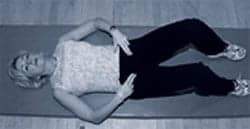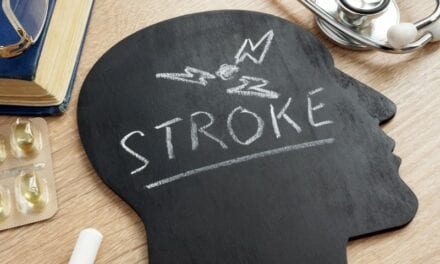A patient at the University of California, San Francisco, Women’s Continence Center (UCSF) once said that, “Incontinence doesn’t kill you, but it can take your life away.” How true that is for women suffering from any of the four basic types of urinary incontinence: stress, urge, mixed, and overflow. Adding to the problem is that for years, women assumed or were misinformed that incontinence was just a normal fact of aging or motherhood and that there wasn’t treatment for it.
It may not be a medical emergency, but it certainly can have a long-range health impact on a woman’s life. She may stop exercising and socializing, she may suffer from depression and embarrassment as a result, but the important thing is that she has choices she can make in terms of how to approach her care that fit her life the best. Awareness, education, and having a rehab program in place that incorporates strengthening the pelvic floor muscles can help your incontinent clients lead a more normal life.
GETTING A PROPER DIAGNOSIS
Let’s start with the basics. In consultation with the patient, she should be evaluated and a physical exam should be performed to make a diagnosis based on her history and exam findings for which type of incontinence she is having. According to the National Association for Continence (NAFC, www.nafc.org), stress incontinence occurs when pelvic muscles have been damaged, causing the bladder to leak during exercise, coughing, sneezing, laughing, or any body movement that puts pressure on the bladder. It may occur after multiple childbirth or menopause. Urge incontinence is the urgent need to pass urine and the inability to get to a toilet in time. It happens when nerve passages along the pathway from the bladder to the brain are damaged, causing a sudden bladder contraction that cannot be consciously inhibited. Stroke, dementia, Alzheimer’s disease, and multiple sclerosis (MS) can all cause urge incontinence. Mixed incontinence is very common and occurs when symptoms of both stress and urge types are present. Overflow incontinence refers to leakage that occurs when the quantity of urine produced exceeds the bladder’s holding capacity. It can result from diabetes, pelvic trauma, extensive pelvic surgery, injuries to the spinal cord, shingles, MS, or polio.
Pelvic trauma sustained during childbirth that may involve weakening around the vagina, uterus, and pelvic floor sometimes culminates in a condition known as prolapse, which can cause incontinence. “Essentially, what happens is a woman’s pelvic organs are protruding or moving out of alignment of their normal or healthy position,” says Nancy Muller, NAFC’s executive director. “You have what’s referred to as a dropped or fallen bladder that is bulging. Sometimes there’s even blockage of the flow of urine that can occur there with leakage that can mimic stress urinary incontinence. But [it’s just that] the urine can’t flow properly out of the body’s outlet around those protruding or prolapsed organs.
“Only after getting properly diagnosed can they pursue effective treatment,” Muller continues. The NAFC provides information and educational materials primarily for consumers to help them understand the symptoms and how to discuss what’s happening with their health care providers.
“Incontinence is common, but not normal,” stresses Janis Luft, assistant professor, UCSF School of Nursing, Department of Family Health, and a women’s health nurse practitioner and behavioral specialist whose practice is primarily continence. Luft says that women come to her from all sorts of backgrounds and ages but basically have one thing in common. “Their bladder is starting to dominate their lives, and their lack of bladder control is something that is taking away from the quality of their life, making it difficult to do what they’d like to do,” she notes. “We recognize what a prevalent problem this is.” It is estimated that some 25,000,000 women are suffering.
BEHAVIORAL APPROACHES
-
- Figure 1. Locating hip bones (anterior superior iliac spine/ASIS).
“We do have a pelvic floor rehabilitation program through the physical therapist on our team,” Luft says. When performed correctly, Kegel or pelvic muscle exercises strengthen the muscles at the bladder, building endurance to help improve, regain, or maintain bladder control. Three techniques you can recommend to your patients:
- Tightening the pelvic floor muscles and holding for a count of 10.
- Relaxing the muscle completely for a count of 10.
- Performing 10 exercises, three times per day.
-
- Figure 2. Find TVA muscles by moving flat fingertips 2 to 3 inches toward center of body and 2 to 3 inches down toward the pubic bone.
The second way to do it is to quickly tighten, lift up, and let go. This works the muscles that quickly shut off the flow of urine to help prevent accidents. These exercises can be done anytime, anywhere. Most people prefer to do them while lying down or sitting in a chair. After 4 to 6 weeks, there is usually some improvement, but it may take up to 3 months to see a significant change.
THE FULL TREATMENT
Jill Dubbs is a PT who sees patients referred from urologists, family doctors, OB/GYNs, and urogynecologists through Lakewood Hospital, which is part of the Cleveland Clinic System, Cleveland. She practices at the local YMCA, where the hospital rents space. Initially, she does a full PT evaluation on the strength and range of motion around her patient’s pelvic area, and then she does an internal muscle exam (transvaginally) to check the strength of the pelvic floor muscles. “I grade that, and depending on what I find, give them an exercise program usually just doing Kegels and how to use those muscles functionally so that they squeeze and brace when they are about to cough or sneeze or lift something,” she says.
-
- Figure 3. Feel a good contraction; slightly tense muscle fibers. Pelvis should be still; buttocks and thighs relaxed.
Dubbs mentions that patients who do have urge incontinence have a muscle-tension component or what is called a short pelvic floor. “I have to do a lot of manual therapy externally around the pelvis and transvaginally,” she says. “They have muscle spasms inside, and that can create the sense of urgency and frequency.” She’ll treat them once per week over the course of 12 visits, doing manual work to reduce the muscle spasms.
Luft says that they also do bladder retraining and can combine that with medication. “Studies show that a combination of behavioral training and medication can work better than either alone,” she says. Muller adds that learning how to do a good, strong pelvic floor contraction at that very moment when you get an urge and being on the medication that helps curb the intensity of the urge can really make that set of circumstances entirely manageable.
“Our program deals with the pelvis as a whole,” explains Missy Lavender, executive director and founder, Women’s Health Foundation (www.womenshealthfoundation.org). “In our classes, we work on the levator ani muscles, transversus abdominus muscles, or the multifidus muscles that run along the lower to middle spine,” she says. These three muscle groups—the pelvic floor, the abdominus, and the multifidi—form the Pelvic Pyramid. “We first get women to understand where those muscles are and then to work them in isolation,” she adds.
Other techniques include biofeedback and behavior modification such as getting women to track what types of liquids they’re taking in and how it affects their bladder, maintaining proper weight, emptying the bladder after intercourse, not pushing with their muscles when urinating, and voiding completely when urinating. The foundation’s mission is to improve the pelvic health and fitness of women of all ages everywhere by creating such programs as Total Control, a full-body fitness program/health information class about female incontinence, and through the dissemination of educational materials. A DVD is in the works, and the foundation is in the midst of publishing its first book, You Go Girl, But Only When You Want To.
OTHER TREATMENT
-
- Pelvic diagram. The levator muscles, above, and below, in brown, form a supportive “floor” for the pelvic organs.
-
Urethral plugs and pessaries—which are vaginally inserted devices—can support the urethra and bladder while providing relief from stress incontinence. “For women who are elite athletes, for example, and who like to go out for really long runs, this is a nice option for them,” Luft states. Some PTs are using electrical stimulation or a newer treatment called percutaneous tibial nerve stimulation, in which a fine needle is inserted into the skin just above the ankles (at the SP6 acupuncture point) to access the post tibial nerve. A small electrode is then placed on the needle from a TENS unit. A mild electrical current is passed through into the nervous system. “That nerve connects with the sacral nerves that innervate the bladder, and it’s felt that that can override some of the aberrant signals that women with overactive bladder experience,” Luft explains.
Dubbs says vaginal weights can also be used that are similar to a tampon and can be taken apart to allow different sizes to be inserted. When vaginal weights are inserted into the vagina, the pelvic floor muscles automatically contract around the cone, identifying the correct muscles while exercising and strengthening them. If used daily for 20 minutes, good results can be expected in about 12 weeks. They can also be used as a preventive measure, to strengthen the pelvic floor muscles in preparation for pregnancy, or as part of an overall fitness program.
The general consensus is that surgical treatment should be performed only after receiving a thorough diagnosis from a health care professional, and that all appropriate nonsurgical treatments should be tried before deciding on surgery. The type of operation recommended depends on the type and cause of the incontinence.
COMMUNITY OUTREACH
Luft and one of her colleagues, Sharon Knight, MD, assistant professor, UCSF Department of Obstetrics, Gynecology, and Reproductive Sciences, are actively engaged in community outreach and give lectures about incontinence, the problem, and evaluation and treatment options. Handouts specifically designed for the continence center are available at the facility and from its Web site (www.ucsf.edu/wcc/).
For more information on bladder control issues, go to www.apta.org or call 800-BLADDER
It is interesting to note that the NAFC provides pelvic floor muscle exercise instruction kits. Not only do these kits work individuals through the how-to aspects, but a motivational video helps keep people, well, motivated. “You ask why in the world do they need additional motivation, but I think it has something to do with the fact that the muscles are hidden,” Muller says. “They can’t always see what they’re doing, and it’s harder to fit into the daily routine. Our materials can also supplement what a PT is doing and are a good idea to have on hand to reassure your patients.”
Nina Silberstein is a contributing writer for Rehab Management. For more information, contact .










